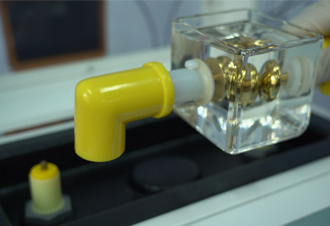 English
English



-
 Afrikaans
Afrikaans -
 Albanian
Albanian -
 Amharic
Amharic -
 Arabic
Arabic -
 Armenian
Armenian -
 Azerbaijani
Azerbaijani -
 Basque
Basque -
 Belarusian
Belarusian -
 Bengali
Bengali -
 Bosnian
Bosnian -
 Bulgarian
Bulgarian -
 Catalan
Catalan -
 Cebuano
Cebuano -
 China
China -
 China (Taiwan)
China (Taiwan) -
 Corsican
Corsican -
 Croatian
Croatian -
 Czech
Czech -
 Danish
Danish -
 Dutch
Dutch -
 English
English -
 Esperanto
Esperanto -
 Estonian
Estonian -
 Finnish
Finnish -
 French
French -
 Frisian
Frisian -
 Galician
Galician -
 Georgian
Georgian -
 German
German -
 Greek
Greek -
 Gujarati
Gujarati -
 Haitian Creole
Haitian Creole -
 hausa
hausa -
 hawaiian
hawaiian -
 Hebrew
Hebrew -
 Hindi
Hindi -
 Miao
Miao -
 Hungarian
Hungarian -
 Icelandic
Icelandic -
 igbo
igbo -
 Indonesian
Indonesian -
 irish
irish -
 Italian
Italian -
 Japanese
Japanese -
 Javanese
Javanese -
 Kannada
Kannada -
 kazakh
kazakh -
 Khmer
Khmer -
 Rwandese
Rwandese -
 Korean
Korean -
 Kurdish
Kurdish -
 Kyrgyz
Kyrgyz -
 Lao
Lao -
 Latin
Latin -
 Latvian
Latvian -
 Lithuanian
Lithuanian -
 Luxembourgish
Luxembourgish -
 Macedonian
Macedonian -
 Malgashi
Malgashi -
 Malay
Malay -
 Malayalam
Malayalam -
 Maltese
Maltese -
 Maori
Maori -
 Marathi
Marathi -
 Mongolian
Mongolian -
 Myanmar
Myanmar -
 Nepali
Nepali -
 Norwegian
Norwegian -
 Norwegian
Norwegian -
 Occitan
Occitan -
 Pashto
Pashto -
 Persian
Persian -
 Polish
Polish -
 Portuguese
Portuguese -
 Punjabi
Punjabi -
 Romanian
Romanian -
 Russian
Russian -
 Samoan
Samoan -
 Scottish Gaelic
Scottish Gaelic -
 Serbian
Serbian -
 Sesotho
Sesotho -
 Shona
Shona -
 Sindhi
Sindhi -
 Sinhala
Sinhala -
 Slovak
Slovak -
 Slovenian
Slovenian -
 Somali
Somali -
 Spanish
Spanish -
 Sundanese
Sundanese -
 Swahili
Swahili -
 Swedish
Swedish -
 Tagalog
Tagalog -
 Tajik
Tajik -
 Tamil
Tamil -
 Tatar
Tatar -
 Telugu
Telugu -
 Thai
Thai -
 Turkish
Turkish -
 Turkmen
Turkmen -
 Ukrainian
Ukrainian -
 Urdu
Urdu -
 Uighur
Uighur -
 Uzbek
Uzbek -
 Vietnamese
Vietnamese -
 Welsh
Welsh -
 Bantu
Bantu -
 Yiddish
Yiddish -
 Yoruba
Yoruba -
 Zulu
Zulu
Exploring the Fundamentals and Applications of Titration in Chemical Analysis Techniques
Understanding Titration Analysis Principles and Applications
Titration analysis is a fundamental technique used in chemistry to determine the concentration of a specific substance in a solution. It entails the gradual addition of a titrant, a solution of known concentration, to a titrand, the solution of unknown concentration, until the reaction reaches completion. This process is crucial in various fields, including pharmaceuticals, environmental monitoring, and food science, as it enables accurate quantification of substances.
The principle behind titration analysis is based on a chemical reaction between the titrant and titrand. Typically, this reaction is a neutralization reaction, where an acid reacts with a base, but it can also involve redox reactions or complexation. The goal is to identify the endpoint of the reaction, which indicates that the titrand has been completely reacted with the titrant. The endpoint can often be detected visually using an indicator, a substance that changes color at a specific pH or concentration level.
There are several types of titration, each serving different analytical purposes. One of the most common is acid-base titration, using a pH indicator to signal when the reaction has reached its endpoint. For example, phenolphthalein is commonly used, as it turns from colorless in acidic solutions to pink in basic solutions. In contrast, redox titrations involve the transfer of electrons and often use indicators that change color due to oxidation or reduction processes. Complexometric titrations are used to determine the concentration of metal ions in a solution, employing chelating agents that form stable complexes with the metal ions.
To perform titration analysis accurately, several steps must be followed. First, it is essential to prepare the standard solution of the titrant, ensuring its concentration is known precisely. The titrand must also be prepared, often requiring dilution before the titration begins. During the titration, the titrant is slowly added to the titrand while continuously stirring the solution. Observing any color change from the indicator is crucial, as it indicates that the endpoint is approaching.
titration analysis

Once the endpoint is reached, the volume of titrant used is recorded. By utilizing the known concentration of the titrant and the volume added, the concentration of the titrand can be calculated using the relationship derived from the balanced chemical equation of the reaction. This calculation is an essential part of the titration analysis process, as it allows for the determination of the unknown concentration accurately.
The precision of titration analysis depends on several factors, including the skill of the individual performing the titration, the purity of reagents used, and the sensitivity of the indicators chosen. Proper laboratory techniques, such as rinsing apparatus and careful measurement, can minimize errors and lead to more reliable results.
The applications of titration analysis are vast. In the pharmaceutical industry, it is crucial for determining the concentration of active ingredients in drug formulations, ensuring safety and efficacy. Environmental chemists utilize titration to analyze water samples for pollutants, such as heavy metals or acidity levels, providing data necessary for regulatory compliance. In food science, titration is employed to measure acidity levels in beverages and foods, which is important for quality control and flavor profiling.
In conclusion, titration analysis is an invaluable technique in analytical chemistry, providing accurate and reliable results for various applications across multiple industries. Mastery of this technique is essential for chemists and researchers who seek to quantify substances within complex mixtures, contributing to advancements in science and technology. Through proper methodology and careful execution, titration remains a cornerstone of quantitative analysis in chemistry.
-
Testing Equipment Industry Sees Major Advancements in 2025: Smart & Precision Technologies Lead the WayNewsJun.06,2025
-
Applications of Direct Current Generators in Renewable Energy SystemsNewsJun.05,2025
-
Hipot Tester Calibration and Accuracy GuidelinesNewsJun.05,2025
-
Digital Circuit Breaker Analyzer Features and BenefitsNewsJun.05,2025
-
Benefits of Real-Time Power Quality Monitoring Devices for Industrial EfficiencyNewsJun.05,2025
-
Earth Fault Loop Testing in High-Rise Building Electrical SystemsNewsJun.05,2025



